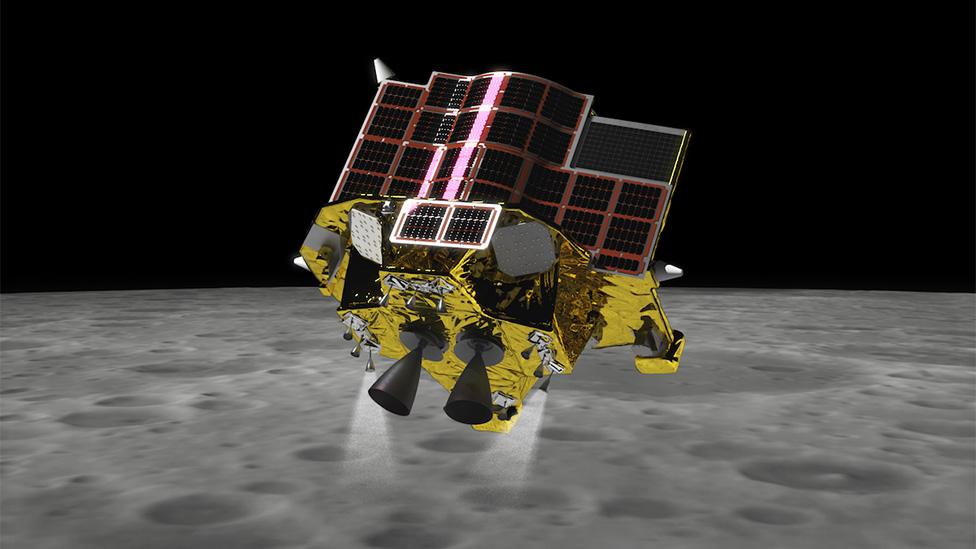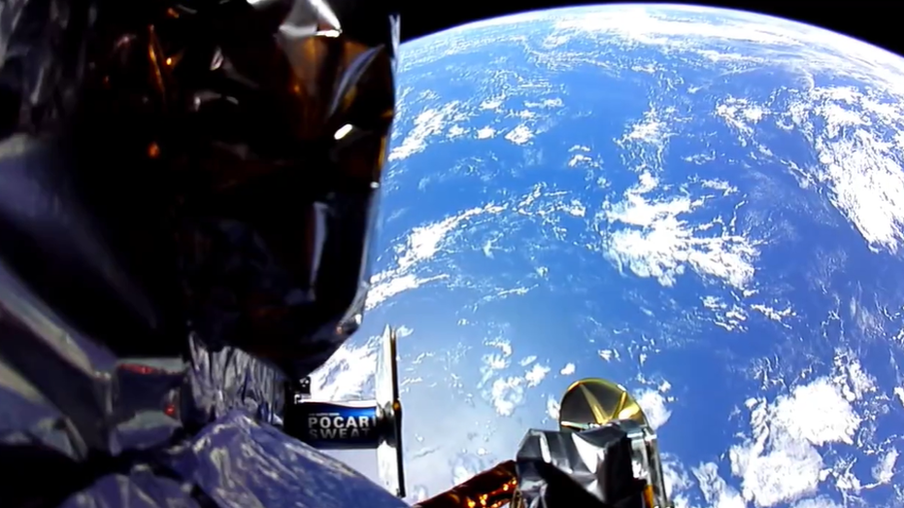Japan mission is latest effort to land on the Moon
- Published

Artwork: Jaxa aims to become the fifth national space agency to land on the Moon
Japan is set to make the latest attempt at a soft touch-down on the Moon.
Its Slim (Smart Lander for Investigating Moon) mission will aim for a gentle slope, close to an equatorial crater called Shioli.
The bid follows the failure this month of a private American company to reach the lunar surface.
Statistically, it's proven very hard to land on Earth's natural satellite safely. Only about a half of all attempts have succeeded.
Japan's space agency (Jaxa) hopes the precision navigation technologies built into Slim will stack the odds in its favour. Those technologies are behind the mission's nickname of "Moon Sniper".
The lander's onboard computer will be using rapid image processing and crater mapping to try to get to within 100m (330ft) of the targeted touch-down point.
Slim is set to begin the descent manoeuvres from an altitude of 15km (9 miles) at midnight into Saturday, Japan Standard Time (Friday 15:00 GMT).
If all goes well, the craft will nestle gently in the lunar "soil" 20 minutes later.
Only the government space agencies of the US, the Soviet Union, China and India have made it to the lunar surface intact. Jaxa has high confidence it will be number five.
There will be a web stream of the descent, external on the agency's YouTube channel.
Slim is not expected to work for long on the lunar surface, however.
Shioli is currently bathed in sunlight and when darkness returns at the end of the month, the spacecraft's solar panels won't be able to generate electricity and components will probably break in the plummeting temperatures.
But before then, Slim wants to use a scientific camera to study the rocks around the crater.
And with luck the mission's two small rovers will have had success traversing the local terrain.
One is a hopping robot that weighs about 2kg (4.4lb).
The other is a ball that will change its shape when it stops to take photos. One of the companies behind its development is Tomy, who created the Transformers toys.
Watch: a demonstration of the mini-Moon robot designed to roll across the lunar surface
Jaxa has twice landed on asteroids - an experience that should put Slim in good stead, although the much larger gravity at the Moon will make the feat a lot harder to achieve.
Last year, a private Japanese company, Ispace, had a go at landing. Its Hakuto-R craft crashed when the onboard computer became confused about its altitude above the Moon. It shut down its thruster system early, assuming the surface had been reached when in reality the mission still had another 5km (3 miles) to go.
On Thursday, the private American company Astrobotic disposed of its Peregrine landing craft in Earth's atmosphere. A propulsion fault prevented it from even trying to make a touch-down attempt.
Related topics
- Published19 January 2024

